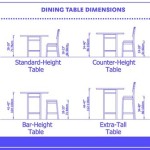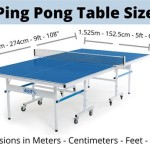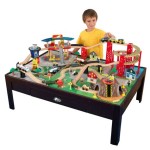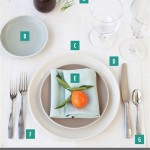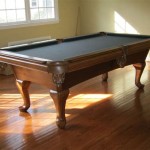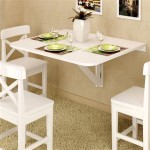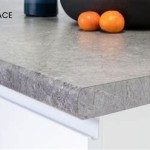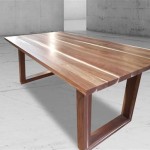Picnic Table Design Plans: Crafting the Perfect Outdoor Dining Experience
A picnic table is a timeless staple for outdoor gatherings, offering a comfortable and convenient setting for meals, games, and relaxation. Whether you're planning to build a table for your backyard, campsite, or a public park, having well-designed plans is crucial for a successful and enjoyable project. This article will explore the key factors to consider when designing a picnic table, providing insights into material selection, dimensions, and construction techniques.
Material Selection: Choosing the Right Components
The choice of materials for a picnic table significantly impacts its aesthetics, durability, and maintenance requirements. Here's a breakdown of popular materials and their pros and cons:
- Wood: A classic and versatile option, wood offers natural beauty, warmth, and a rustic charm. Common choices include cedar, redwood, pine, and pressure-treated lumber. Wood's durability varies depending on the species and treatment, but it can be susceptible to rot, decay, and insect infestation if not properly maintained.
- Metal: Steel and aluminum are durable and weather-resistant options, offering a modern and sleek look. They are typically low-maintenance but may require rust prevention measures. Metal tables can get hot in direct sunlight and be prone to dents and scratches.
- Plastic: Lightweight and affordable, plastic picnic tables are ideal for casual use and portability. They are highly resistant to weather and pests but can be less durable than wood or metal and may not have the same aesthetic appeal.
- Concrete: Concrete is a robust and long-lasting material that can withstand heavy use and harsh weather conditions. It offers a modern and minimalist aesthetic but requires skilled craftsmanship and can be heavy and difficult to move.
Ultimately, the best material for your picnic table depends on your budget, aesthetic preferences, desired level of durability, and intended use. Consider factors like the frequency of use, weather exposure, and your maintenance capabilities when making your selection.
Dimensions and Design: Matching Form and Function
The dimensions of your picnic table should align with its intended use and the available space. Here's a breakdown of common dimensions and design considerations:
- Tabletop Size: A standard rectangular picnic table measures 6 feet long and 3 feet wide, comfortably seating six people. For smaller gatherings, a 4-foot long table is sufficient. Circular tables offer a more intimate and casual setting, with diameters ranging from 4 to 6 feet.
- Table Height: The standard table height for a picnic table is 28 inches, providing comfortable seating for most adults. Adjusting the height to suit the intended use is possible, such as lowering it for children or incorporating a wheelchair-accessible design.
- Bench Length: The length of the benches should comfortably accommodate the number of people you want to seat. Standard benches are typically 6 feet long, but they can be customized to fit specific needs. Consider adding armrests for enhanced comfort.
- Leg Design: The legs should be strong and stable, capable of supporting the weight of the table and its occupants. Common leg designs include A-frame, H-frame, and pedestal. The choice of leg design depends on personal preference and the overall aesthetic of the table.
When designing your picnic table, consider the available space, the number of people you want to seat, and the overall style you're aiming for. Use visual aids like sketches, diagrams, or 3D models to help you visualize and refine the design before starting construction.
Construction Techniques: Building a Durable and Safe Table
Once you've finalized the design, choose appropriate construction techniques to ensure your picnic table is sturdy and safe. Here are some key steps to consider:
- Joints and Fasteners: Strong and reliable connections are essential for structural integrity. Utilize mortise and tenon joints, dado joints, or pocket-hole screws for joining the tabletop and legs. For secure fastening, opt for galvanized screws, bolts, or lagscrews.
- Support Braces: Incorporate support braces to enhance stability and prevent warping or sagging. Diagonal support braces in the table legs and cross braces under the tabletop provide added strength.
- Finishing Touches: After construction, consider finishing the picnic table with a protective coating. A coat of paint, stain, or varnish helps preserve the wood, enhance its appearance, and make it weather-resistant.
- Safety Considerations: Always prioritize safety during construction. Use appropriate safety gear like eye protection, gloves, and a dust mask. Ensure all joints are secure and there are no sharp edges that could pose a risk of injury.
By following these construction techniques, you can build a high-quality picnic table that will withstand the test of time and provide countless enjoyable moments outdoors.

Diy Building Plans For A Picnic Table

Woodsmith Picnic Table Plan

18 Rustic Diy Picnic Tables For An Entertaining Summer Free Plans Progetti Facili Di Falegnameria Tavoli Da Per La Lavorazione Del Legno

Diy Building Plans For A Picnic Table

50 Free Diy Picnic Table Plans And Ideas That Will Bring Your Family Together

How To Build A Picnic Table The Home Depot

Picnic Table For Two Plan Trending Patio Design Fun Woodworking Projects Beginner Wood Working Plans Pub Style

Diy Building Plans For A Picnic Table

How To Build An Octagon Picnic Table Part 1
:max_bytes(150000):strip_icc()/instrcutables-5b23f5680e23d90036196cb0.jpg?strip=all)
15 Free Picnic Table Plans In All Shapes And Sizes
Related Posts

